Covering grass seeds prevents them from drying and wandering off. While you do not have to plant each grass seed carefully into the soil as you do for some other plants, it does not mean that you can just throw grass seeds on the surface of your lawn and expect to grow a lush green lawn.
There is a whole world of lawn care, and at the base of it is planting grass seeds in a proper way. It is not something complicated; however, there are a few things that you should be careful about.
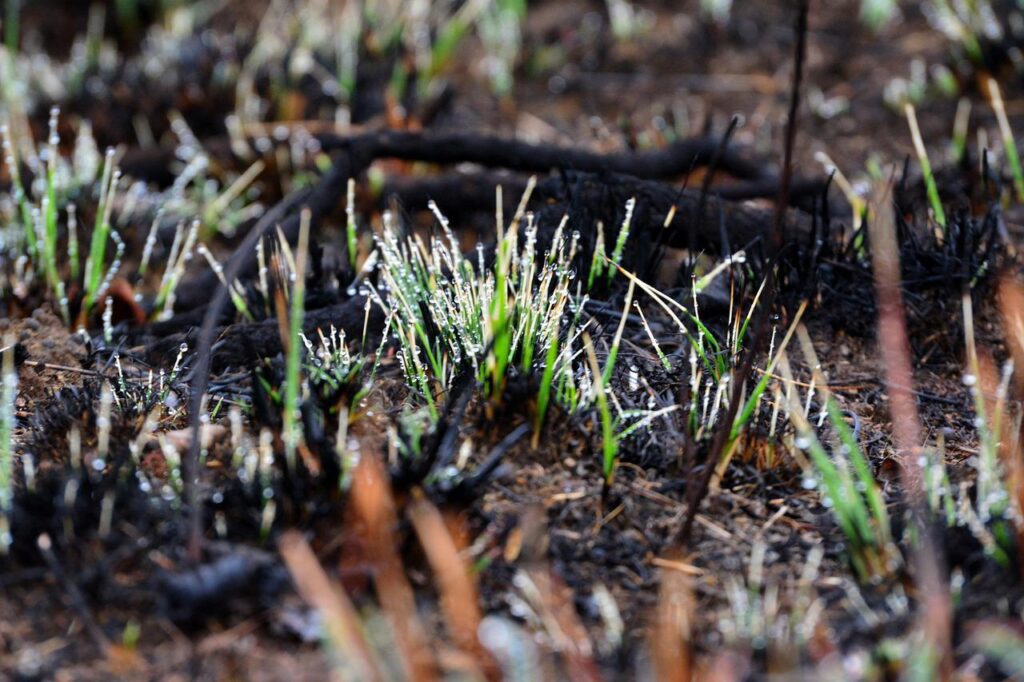
For instance, ensure that you plant grass seed at the right time of the year and then water your lawn consistently. Grass seeds need all the moisture they can get, and if they dry, you can say goodbye to your dream of having a lush green lawn. One way to ensure that grass seeds do not dry out is to cover them with soil or mulch.
And people often ask us, can grass seeds grow if not covered or will grass seeds grow if I just throw them on the ground?
The short answer is yes! Grass seeds will grow if you just throw them on the surface of your lawn. However, the seed germination will be much MUCH lower. Similarly, grass seeds will grow if not covered, but the seed germination rate increases when you cover the seeds.
So, let’s go ahead and quickly discuss why you should cover grass seeds, how to prepare the lawn soil for planting seeds and what materials you can use to cover your seeds.
Why Do You Need To Cover The Grass Seeds?
Grass seeds need to be protected from environmental elements, birds, rainfall and runoff. That is why it is essential to cover the grass seeds.
If you are overseeding an existing lawn, this might not be needed. It is because existing grass on the lawn can provide cover for the grass seeds. Just make sure that the grass is not too sparse or dry. However, covering the seeds is very important if you are planting a new lawn.
Protects From Environmental Elements
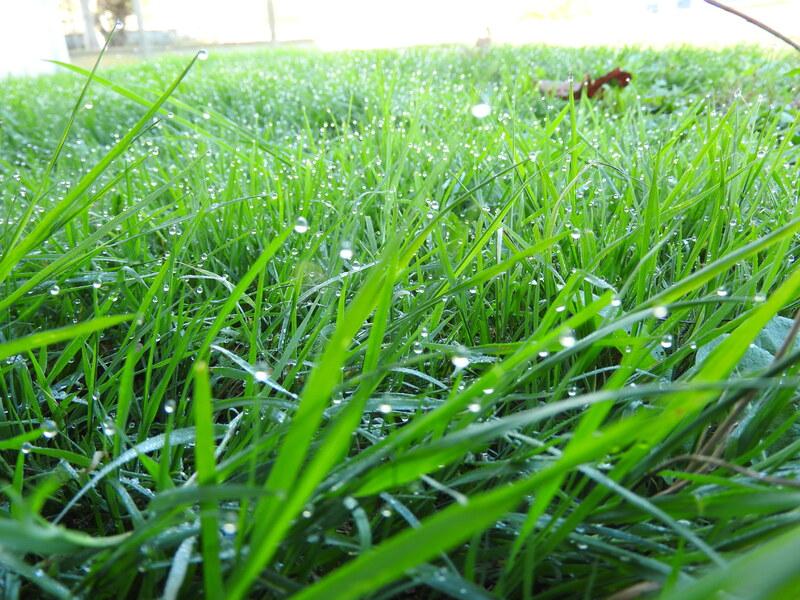
Seeds need to be at the right temperature to germinate successfully.
The germination of grass seeds can take between five to thirty days, depending on the variety of the grass. During this time, you cannot just let grass seeds simply get exposed to environmental forces such as air and temperature. It is because grass seeds need to be at the right temperature to germinate successfully.
In addition, moisture also plays a significant role in seed germination, perhaps more so than the soil temperature. If your grass seeds are lying openly in the air, there is a considerable risk that they will dry. That is why it is very important that you cover the grass seeds immediately after placing them on your lawn.
Covering the grass seeds will not only keep them from drying but also warm, which will improve seed germination.
RELATED: What Is The Best Time To Plant Grass Seed In Spring? Grow A Perfect Lawn!
Encourages Healthy Root Development
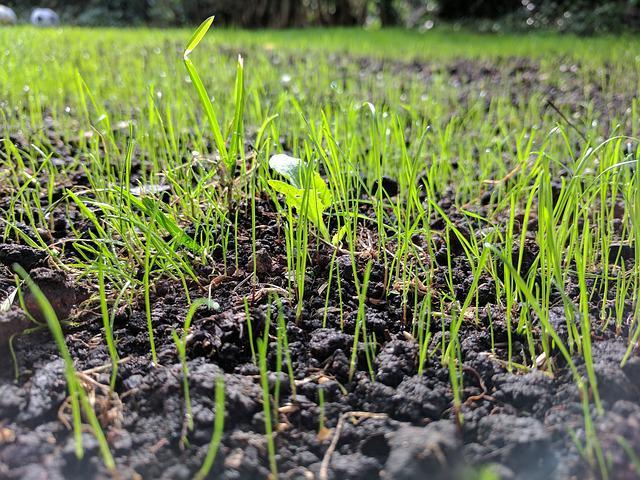
Properly sowed seeds develop a robust root system.
If you just throw grass seeds on the ground, some will grow. However, you can improve the rate of seed germination and grass growth by simply covering the seeds. It is because there needs to be an excellent seed-to-soil contact for germination and growth. When seed-to-soil contact is low, some seeds will grow and others won’t.
Another thing that would happen is that the growing grass plants will fail to develop a robust root system because of the poor seed-to-soil contact. Grass plants that do not have a robust root system can be easily pulled off, and their chances of dying due to stress are much higher than grass plants with deeper roots.
So, germinating seeds must have a good seed-to-soil contact which will improve seed germination and root development.
Discourages Bird Activity
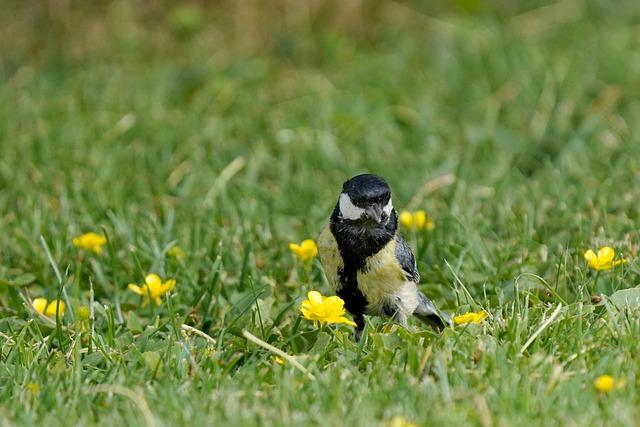
If there is one bird on your lawn, soon more will follow.
Everyone loves a free meal, including birds! So, when you have seeds lying naked on the surface of your lawn, birds will follow. These birds can eat a significant portion of seeds on your lawn, and you might end up with patchy or no turf at all.
The best way to discourage bird activity in your yard, which can eat seeds and uproot grass seedlings, is to cover your lawn with a thin layer of soil or mulch.
Prevents Runoff
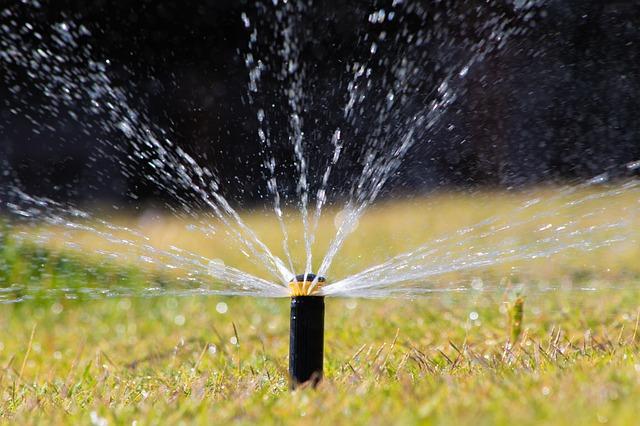
Heavy rain can easily wash grass seeds away.
Once again, seed germination can take anywhere between 5 to 30 days. During this time, seeds do not have an anchor to hold them in their place. So, running water could easily wash the seeds off your lawn if the seeds are not adequately covered.
Sometimes the water runoff might not be strong enough to remove seeds from your lawn altogether. However, it can still cause the grass seeds to aggregate in one place, resulting in grass growing in spots instead of uniformly across the lawn.
Covering grass seeds with a thin layer of soil or mulch will prevent grass seeds from sweeping away with the water and hold them in their place.
RELATED: What Is The Best Time To Fertilize Your Lawn, Before or After Rain?
Preparing Soil & Planting Grass Seeds
Now that you know why it is essential to cover grass seeds, we can discuss how to plant seeds on your lawn correctly. Now, it might come as a surprise, but there is much more involved in planting grass seeds than just throwing them in your yard, LOL.
Test Soil PH
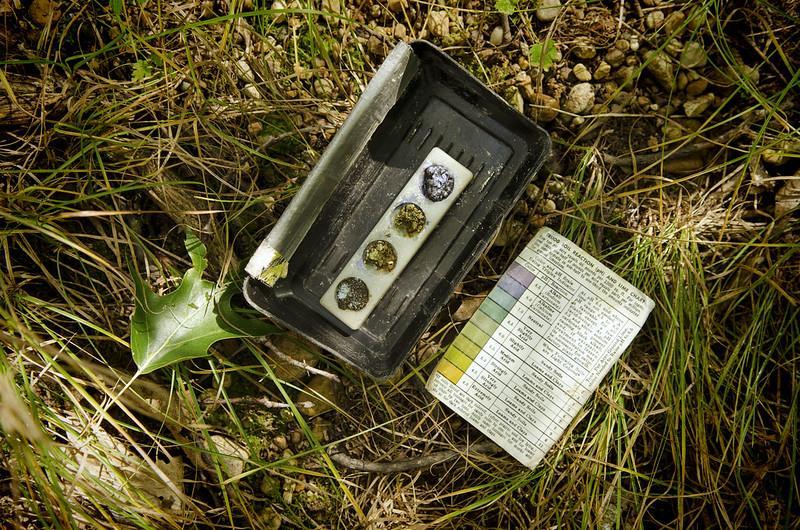
Seed germination could take a hit if your lawn soil is too acidic or basic.
Lawn grasses germinate and grow best when the soil has a proper pH. That is why it is essential to test the pH of your soil before planting grass seeds. Soil pH meters are inexpensive and readily available.
On testing, if your soil is too acidic, just add a bit of lime, and if it is too alkaline, you can add sulfur or an organic compound such as compost and mulch.
Aerate Your Yard
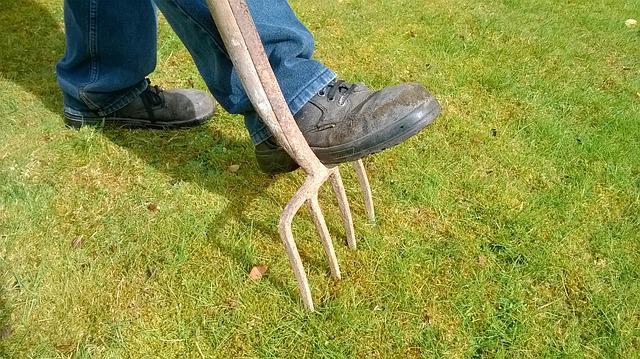
Aeration improves nutrient air and water availability to the seeds.
Seeds have a tiny supply of nutrients to support their initial germination. Once they germinate, they need tons of nutrients, water, and air to support their growth. Moreover, they need to develop roots to anchor themselves to the ground.
If the lawn soil is compacted, root development suffers, and water, air and nutrients from the surface also cannot reach the germinating grass. That is why you must resolve any compaction issues in your yard before planting seeds.
Aerating the lawn soil can help resolve the compaction issues of your lawn. The result will be that the growing grass will develop a robust root system, and nutrients, air & water will be readily available to them.
Sow & Tamp Grass Seeds

Always use the right amount of seed. Using too much seed can increase competition between grass plants.
Once the soil is ready, you can plant grass seeds on your lawn. We highly recommend that you only use the recommended amount of seeds when establishing or overseeding a lawn. Using too much seed can increase competition between the grass plants, and you might end up with a thin or patchy turf.
Use a spreader to distribute seeds on the surface of your yard evenly. Next, use a lawn roller to tamp seeds into the ground. This will increase seed-to-soil contact, ensuring proper seed germination and grass growth.
Do not bury the seeds too deep into the ground. This will create problems for the growing grass seedlings, which might suffocate and die.
Covering The Grass Seeds
Once you have successfully placed seeds into the yard, the next step is to cover them. There are many options to choose from when it comes to covering the grass seeds on a lawn. Let’s explore these options one by one:
Topsoil Or Compost
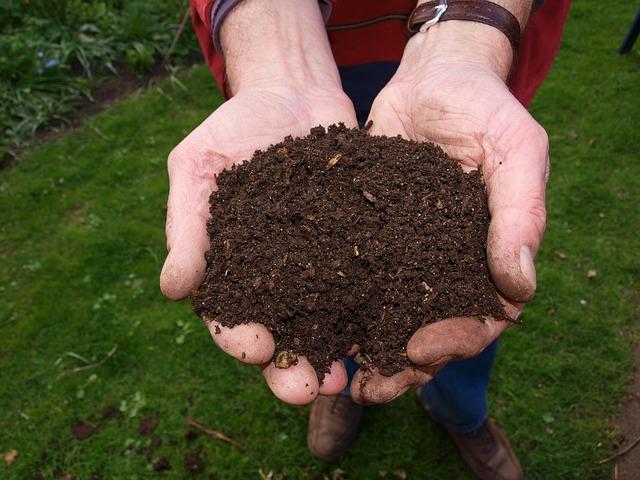
Compost not only makes an excellent seed cover but also increases soil fertility.Using topsoil or compost is one of the easiest and simplest ways of covering loose grass seeds in your yard.
Both compost and topsoil are inexpensive and easily and readily available. Compost not only makes an excellent grass seed cover but also increases the fertility of the lawn soil.
If you are establishing a new lawn, we suggest you use topsoil. However, when it comes to choosing a grass seed cover for existing lawns, it is best to use compost. You can also mix topsoil with compost to cover the seeds in your yard.
Topsoil and compost are easy to handle, and you can easily spread them both on the surface of your lawn with a shovel. However, if you have a large lawn, investing in a rolling compost spreader might be better.
Straw Mulch
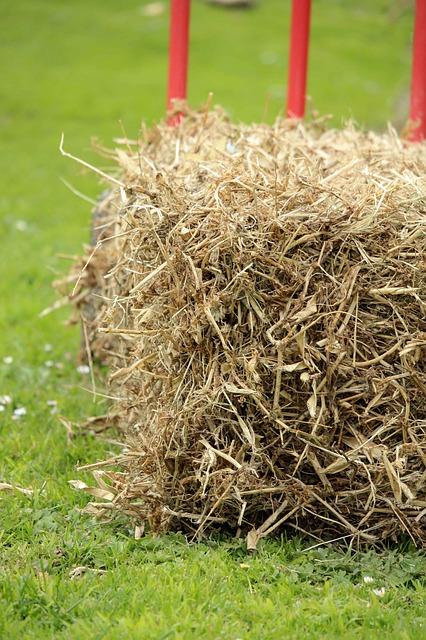
Straw mulch is light and easy to work with.
Another great way to cover grass seeds in your yard is to use straw mulch. It is light, inexpensive and easy to work with. However, remember that straw mulch does not house as many nutrients as compost or topsoil. So, you will have to spend extra on lawn fertilization and buying straw mulch for your yard.
You must also prepare the lawn soil properly before spreading straw mulch on it. First, loosen up the lawn soil for planting seeds, fertilize the area with a lawn starter food, sow the seeds, and tram them into the ground using a rake.
Next, spread the straw mulch onto the seed. However, make sure that straws are loose, so there is plenty of space for water and air to pass through the mulch.
Grass Clippings

Grass clippings can be used both as compost and seed cover.Using grass clippings is another way to cover grass seeds in your yard. They have the properties of both straw mulch and compost. So, next time think hard before throwing a bag of grass clippings into the dumpster.
However, there are a few things that you should keep in mind when you use grass clippings as a seed cover in your yard. Make sure that grass clippings are not wet, making growing grass prone to fungal diseases.
Make sure that the layer of grass clippings does not get too thick. It can prevent air and moisture from penetrating the soil, severely affecting seed germination and grass growth. The great thing about grass clippings is that they break down quickly and become a part of lawn soil. So, there is no need to rake them up after use.
Grass Seed Mulch
If you do not want to use any of the things mentioned above, you can always use bagged grass seed mulch. They are specifically designed for grass seeds and are biodegradable. Like grass clippings, grass seed mulch breaks down over time and becomes a part of lawn soil. So, there is no need to rake it up after use.
Final Thoughts
Although grass seeds can grow if not covered, planting grass seeds to establish a lawn and not using a seed cover is unwise. It will significantly decrease the grass seed germination rate, and you will end up with patchy turf or a few spots of grass growth.
Covering grass seeds improves seed-to-soil contact, thus directly supporting seed germination. It also protects the grass seeds from environmental elements such as rain, wind and heat. This keeps the seeds moist and at the right temperature for germination.
Frequently Asked Questions (FAQs)
Do grass seeds need to be buried?
If by burying you mean pushing grass seeds a few inches deep into the ground, then no! However, grass seeds need to be covered with a thin layer of soil, compost or mulch. This is to keep them moist and prevent them from wandering off.
Why did my grass seed not germinate?
There are many reasons why the grass seeds are not germinating. It could be anything from using expired seeds to planting them in the wrong season. In addition, sometimes grass seeds do not grow because there is no cover to protect them from environmental elements such as heat, wind and rain.
How long does it take for grass seed to grow?
Depending on the variety of grass seeds used in your yard, it can take anywhere between 5 to 30 days. In cool-season grasses, ryegrass, while in warm-season grasses, Bermuda grass is the quickest to sprout.
What should I cover grass seed with?
There are many things you can choose to cover the grass seeds. You can use topsoil if you are establishing a new lawn, or you can use compost on existing lawns. If you do not have any of these, you can use grass clippings or straw to cover your seeds.
How long do you keep grass seed covered?
The purpose of covering grass seeds is to protect them and support the growing seedlings. Once grass reaches a height of about two to three inches, the seed cover is no longer needed. At this time, gently lift the cover and discard it or se it in compost.
Sources For Further Reading
Five Keys to Successful Grass Seeding – USDA Natural Resources Conservation Service
Establishing a Lawn from Seed – Iowa State University Extension and Outreach
Turfgrass Establishment | Seeding – The University of Tennessee Extension Service







